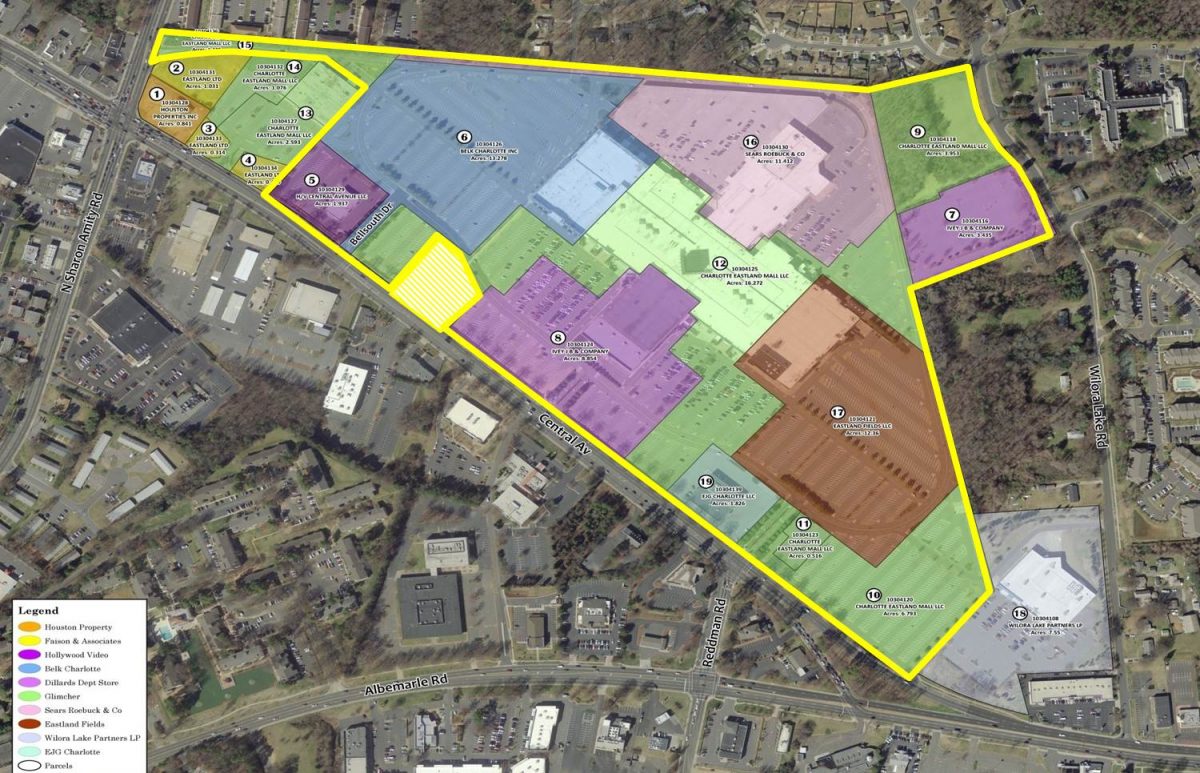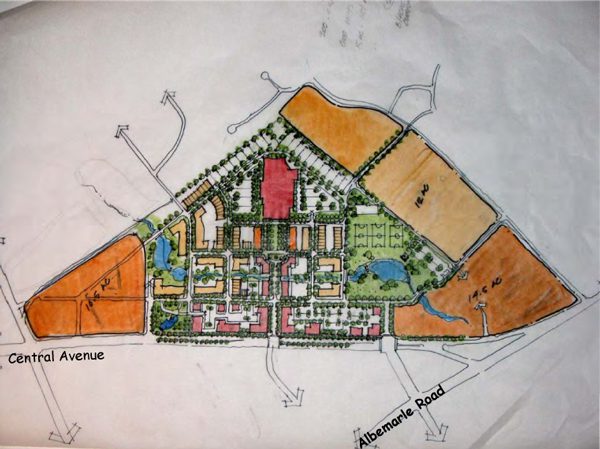Eastland Mall: What’s next? Some options
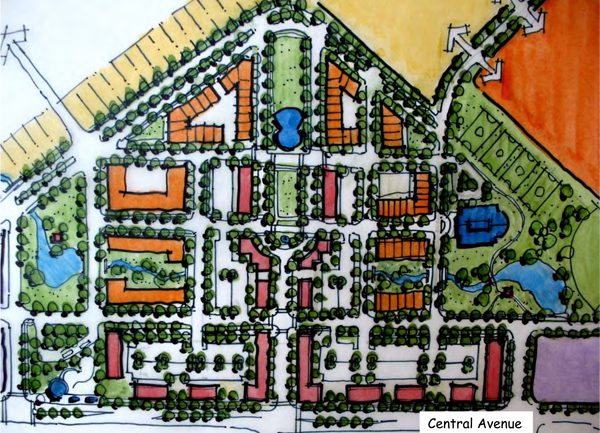
The city of Charlotte voted July 23 to buy 80 acres of the old Eastland Mall site for $13.2 million. It’s a big investment, and some say it’s a risky one as well.
Eastland, opened in 1975 as one of Charlotte’s most popular shopping spots, with a popular indoor ice rink, fell on hard times. Anchor stores moved out. Ownership of the property was fragmented. The final section that had remained open was closed two years ago.
The city plans to buy almost all the site, from seven owners. It says it’s interested in considering whether to turn the site into a film studio and sound stages and says it has received inquiries from “multiple” studios. Independent filmmaker Bert Hesse has his eye on the site for sound stages, post production facilities, classrooms and offices, which he would call Central Avenue Pictures. The city has not specified other plans.
|
Have an idea? How would you redevelop Eastland Mall? Put your comments below. Or email ideas to mnewsom@charlotte.edu. |
City officials say they’ll study the possibilities until December, then seek development proposals that would support the local film and television production industry. However, city officials say, they don’t expect such a development to occupy all 80 acres.
So, what are the possibilities? What should happen at the site? How can the 80 acres be used to improve the area, connect neighborhoods and serve the people who live nearby?
If you drive by Eastland on Central Avenue, the first thing you might notice is a gray sea of 5,762 empty parking spaces. The next is likely to be the building, a relic of what was the largest mall in North Carolina when it opened 37 years ago. The land taken up by the whole triangular-shaped property, about 90 acres, would reach from the Bank of America Stadium to Time Warner Cable Arena in uptown Charlotte.
Shifts in the area’s demographics, retailing in general and shoppers’ perceptions gradually eroded the mall’s prominence. Its 1,030,746 square feet couldn’t be supported, and the tenants left. The mall closed in summer 2010.
Most urban designers would advise that any new development on the site should:
- Be easy to walk to, and walk around in.
- Be connected to transit options.
- Encourage walking and biking.
- Have connected streets, to offer multiple ways to get there from elsewhere.
- Have many things to do, see and experience. Today’s malls sell “experiences,” as well as goods.
- Have amenities targeting many different age groups.
- Offer a compact community, including housing, offices and stores.
- Have public spaces: parks, plazas and wide sidewalks.
Ellen Dunham-Jones, an architect and urban design professor at Georgia Tech, is co-author of Retrofitting Suburbia: Urban Design Solutions for Redesigning Suburbs, which looks at several mall redevelopments. “You’ve got to get a mix of uses, but the connectivity is probably even more important,” she said in an interview in The AtlanticCities.com. “The uses will come and go over time, but if you can establish a walkable network of streets, that’s when you’re really going to establish a ripple effect in changing suburban patterns.”
Eastland is not the first indoor shopping mall in the country to die. Charlotte already has an example of one indoor mall, the venerable James Rouse-built Charlottetown Mall, opened in 1959, demolished in 2006 and replaced with the Metropolitan development at Kings Drive and Charlottetowne Avenue. Following are five examples of changes made to (or proposed for) severely distressed malls. The redevelopments include:
- Building a mixed-use center with housing and retail.
- Building a major park or civic space to help attract new businesses and housing.
- Building a sort of Main Street – turning the inward-facing mall out to storefronts and streets.
Urban Land Institute study of Eastland Mall: Mixed-use neighborhood
First is the study by the Urban Land Institute, a nonpartisan nonprofit group based in Washington. Its report, completed in March 2007, offered analysis and several ideas, including creating a mixed-use neighborhood.
Notice the stream represented by the dashed blue line under the mall.
The other snake-like striped sections represent SWIM buffers (Surface Water Improvement and Management), which are no-build zones along streams to preserve water quality.
The ULI plan breaks the site into a mixed-use development and aims to create a new center for east Charlotte.
It calls for:
- Focusing on a central gathering place, a new grid of streets, a re-opened stream and an interactive fountain.
- Programming events such as farmers markets, antique shows, civic meetings and street festivals.
- Enlivening the area with a recreation center or YMCA, combined with sports fields.
- A new ice rink.
- Links to a regional bikeway/trail system.
What to like about it:
- It meets most of the ideals that urban designers would recommend, such as combining several uses, including homes, stores and workplaces, all close together.
- It uncovers the hidden creeks to create greenways – better for water quality and better for recreation.
- It puts buildings right on city sidewalks, not set far back behind surface parking lots.
- It took the Eastland area’s opportunities and challenges into account.
What not to like:
- Its 2007 recommendations for retail are unlikely to fly with today’s economic climate and finance realities.
- In today’s financial lending world, it’s harder than before for developers to get loans for mixed-use projects.
Columbus (Ohio) City Center: Urban park

Why not develop an urban park surrounded with restaurants, homes and businesses?
Built in the late 1970s, Columbus’ City Center mall was torn down in 1999 to make a new 9-acre park in the heart of Ohio’s capital city, now called Columbus Commons. It is ringed with residential, office and stores. A park proved less costly than renovating the structurally sound but abandoned mall. The existing underground parking and the parking decks remained. The park now hosts community events like rock concerts, a summer music series by the Columbus Symphony “Picnic with the Pops” and free classes for yoga, kick-boxing, and Zumba. The new park has lured development, spurring restaurants and new interest in living downtown. Frequent festivals on the green attract record crowds.
In many ways Columbus Commons is not comparable to Eastland Mall. It’s downtown and a much smaller site. But it offers an example for how an urban park can be surrounded by new development. A park rimmed with a variety of housing, office, retail, and recreational uses could be one viable option for the Eastland site.
What to like about it:
- Urban park, wrapped with residences, office, retail, recreation.
- Improves the quality of public space and open space in the city.
- A similar open space at Eastland Mall could open up the waterway now hidden beneath the building and the pavement.
- The park provides space for community events like concerts, exercise classes and festivals
What not to like:
- Because of its size and downtown location, in many ways it isn’t comparable to Eastland’s much larger site in a suburban-style area.
Randhurst, Mount Prospect, Ill.: Malls into Main Street?
Transforming former enclosed malls into main streets with storefronts, wide sidewalks and on-street parking has been one trend for mall redevelopments. In aiming to create a neighborhood feel developers build a “Town Center,” breaking up the mall’s one, large building into bite-sized chunks, adding housing and businesses.
The sea of parking lots still surrounds the “Town Center,” but the activity of shoppers has been turned onto the streets.
One example is the renewal of suburban Randhurst mall, which opened in 1962 among what were then fields and farms in Mount Prospect, Ill., northwest of Chicago. It was the largest air-conditioned mall of its time. Instead of retrofitting the complex, developers started new, and in 2008 the old mall was torn down. This graphic from 2011 shows the development plan. Casto Development, partnering with the Village of Mount Prospect, built a Main Street, open-air portion.
What to like about it:
- It’s better than a failing, interior-focused mall building.
- The street storefront development provides enclosure, which is more interesting and enjoyable than walking across a wide open parking lot.
What not to like:
- It is still a stand-alone single-purpose mall separated from its context, and surrounded by parking.
Belmar, Lakewood, Colo.: Main Street with sustainable energy twist
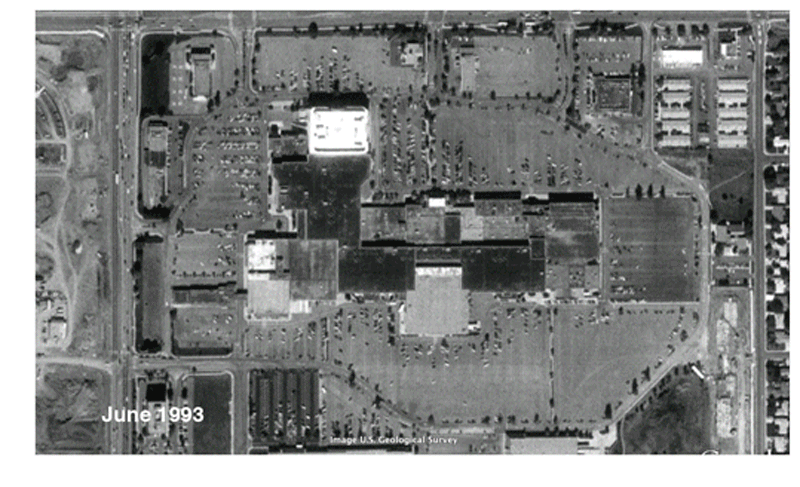
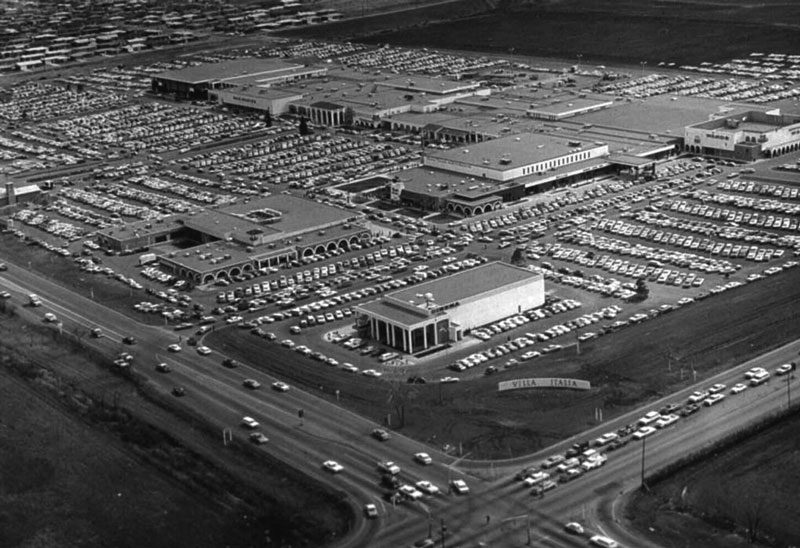
Belmar took the place of the once-failed Villa Italia mall in Lakewood, Colo. It’s a 23-block, 104-acre site with a mix of destinations, residents, and retail. With a sustainable mission, the development has 8,370 solar panels, which it says is more than any other retail center in America, covering three, four-story parking garages. Belmar’s wind farm generates 700-900 kwh per month.
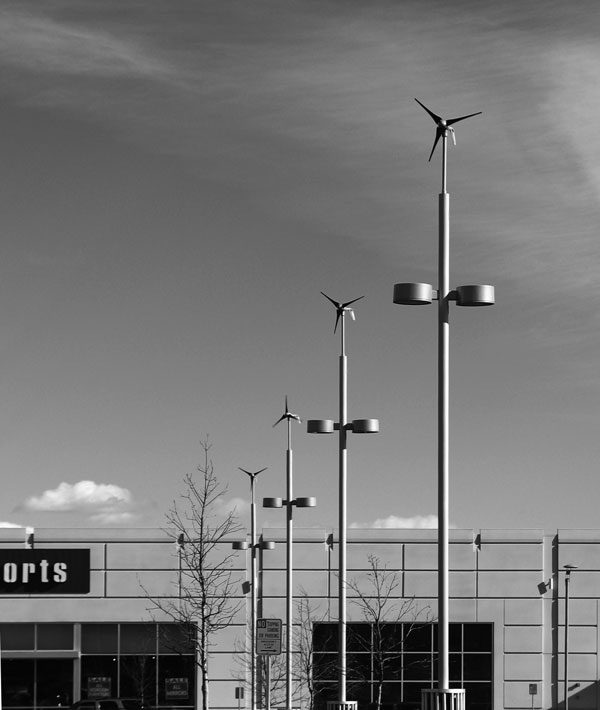
The new road network connects to the existing street grid, a basic necessity for a walkable neighborhood. The development is next to a transit corridor, and light rail is expected to arrive in 2013.
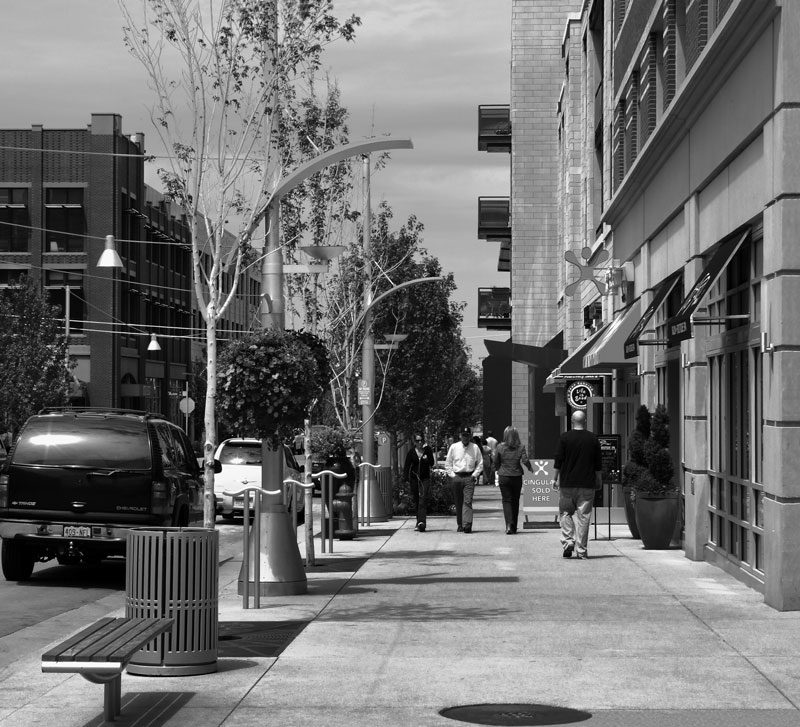
What to like about it:
- Energy efficient measures promote sustainability.
- It’s close to transit options.
- It created a new street grid.
- It offers a mix of uses, so residents can live, shop and work close by.
What not to like:
- Many parking lots could be used for more beneficial development opportunities.
Englewood, Colo.: Include and integrate, don’t isolate

Less than 10 miles from Lakewood is Englewood, south of Denver. Cinderella Mall, built in 1968, was the largest shopping mall west of the Mississippi. It had 1.35 million square feet of enclosed retail space. A shift in demand and economy in the early 1990s brought a downward spiral from 1991 to 1997 when the last tenant, Montgomery Ward, left in December 1997.
Today CenterCity, as it’s now called, has reinvented itself as a transit-oriented-development (TOD) and civic center. Opening in June 2000, the old Foley’s building is now home to the city hall, library, municipal court and Museum of Outdoor Art. A light rail line opened in July 2000 and a station is tucked next to that civic building. A landmark bridge spans eight bus bays that sit next to the tracks. A 2-acre public plaza frames the entrance to the light rail, acts as a big, grassy front porch to the civic building and holds art and sculpture. The city of Englewood collaborated with a private, nonprofit group of local developers, landscape architects, bankers, real estate executives, planners and attorneys to see the development through.
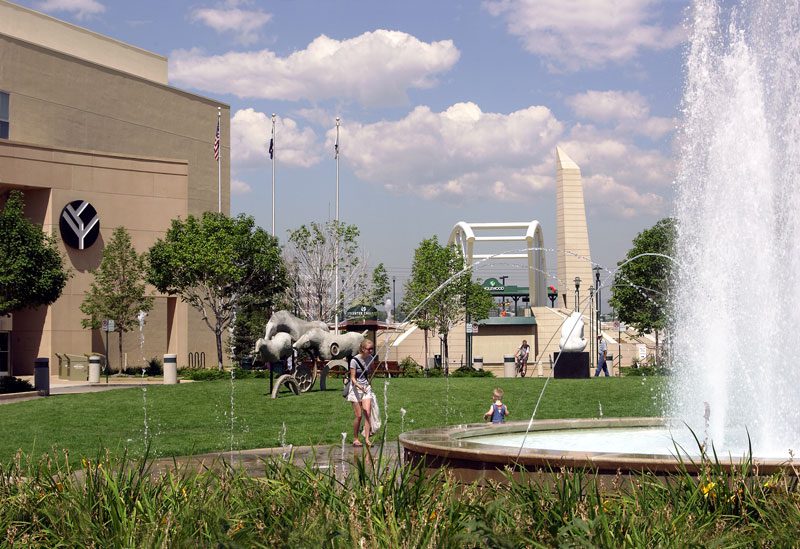
What to like about it:
- Retail and residential integration with the light rail line and bus transit station.
- Use of public art and developing a civic community base.
- Public/private partnership
- Shared parking between the transit stop, retail and residential users.
- The creation of a street with storefronts and on-street parking.
- A landmark bridge feature that creates a memorable place and icon for the area.
What not to like:
- The large Walmart parking lot on the street frontage (see the big white box building). What if the Walmart had been built right up to the street, to continue a line of storefronts?
- Not enough connector streets. Notice the block size difference between the Walmart block and the streets in the residential area.
Across the country, urban leaders and developers have strategized the best ways to make a dead, abandoned place full of life again, stimulating the surrounding neighborhoods and creating new destinations.
Examples shown here are just a few that have been successful. Maybe Eastland’s redevelopment will follow in some of these earlier footsteps, or perhaps it will experiment, striving to be the next catalyst for east Charlotte.
What do you think is the best development plan for the Eastland Mall property? Tell us in comments below.
